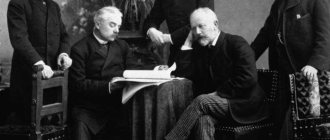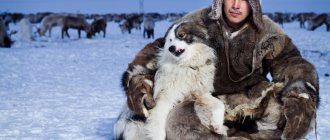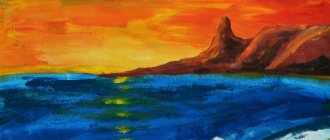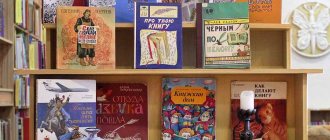Slide captions:
THE AMAZING WORLD OF STONES Responsible: teacher-speech therapist Statkevich E.O. educators Mashalgina G.P. Budantseva O.I. GBDOU kindergarten No. 34 2015
Goal: Expand knowledge about the variety of stones and their properties Objectives: Introduce children to the concept of “stone” Introduce children to the groups into which stones are divided Introduce children to the most famous stones - Introduce stone products
Stone - (Old Slavonic “kamy”). Hard mineral material (rock mass). Basically, rocks or precious stones (diamond, diamond, etc.) are called stones. They come from the Ukrainian “kamin” - “mountain”.
Stones are as integral a part of nature as plants and animals. But the world of stone is older than the living world. In Rus', rings with stones were worn in ancient times.
Belief in the mysterious magical power of precious stones has existed since ancient times, so they were purchased as amulets and talismans that protect against hostile forces and bring happiness, curing all diseases. The three main virtues of precious stones - beauty, durability, rarity - set them apart from the world of inanimate nature.
There are many different stones in the world in shape and size. Group I - precious stones (gems) diamond, ruby, sapphire, emerald, alexandrite, topaz, aquamarine, garnet, turquoise, rock crystal and others. Group II - ornamental (colored stones) jade, lapis lazuli, glavcolite, sodalite, amazonite, labradorite, rhodonite, azurite, malachite, jade, lapis lazuli, glavcolite, sodalite, amazonite, labradorite, rhodonite, azurite, malachite, gypsum. Group III - organogenic precious stones: pearls, coral, amber, jet.
The most famous of all stones is DIAMOND. Diamond - the name of the most famous precious stone comes from the Greek "adamos", which means irresistible or indestructible, and the Arabic "almas" - the hardest. The main distinguishing features of diamond are the highest hardness among minerals (but at the same time fragility). Jewelry-quality colored diamonds can be born in absolutely any color, tone, hue, saturation... The most common are lemon yellow and blue stones, less often - red, green, violet, purple... Even more rare - pink... The rarest are natural black diamonds, for Throughout the entire history of diamond mining, only a few hundred such stones have been found and documented... The first diamonds were found in India. From ancient Indian sources it follows that this happened about three thousand years BC. DIAMOND
DIAMOND PRODUCTS
Preview:
To use presentation previews, create a Google account and log in to it: https://accounts.google.com
Experiments with stones senior group (5-6 years old)
Principles of preschool education (FSES DO):
1) full-fledged experience by the child of all stages of childhood (infancy, early and preschool age), enrichment (amplification) of child development;
2) building educational activities based on the individual characteristics of each child, in which the child himself becomes active in choosing the content of his education, becomes a subject of education (hereinafter referred to as individualization of preschool education);
3) assistance and cooperation of children and adults, recognition of the child as a full participant (subject) of educational relations;
4) supporting children’s initiative in various activities;
5) cooperation of the Organization with the family;
6) introducing children to sociocultural norms, traditions of the family, society and state;
7) formation of cognitive interests and cognitive actions of the child in various types of activities;
 age adequacy of preschool education (compliance of conditions, requirements, methods with age and characteristics of activity;
age adequacy of preschool education (compliance of conditions, requirements, methods with age and characteristics of activity;
9) taking into account the ethnocultural situation of children’s development.
Educational and methodological kit:
Federal state educational standard for preschool education. / Ministry of Education and Science of the Russian Federation, order No. 1155 of October 17, 2013.
Approximate basic educational program for preschool education P 56 “Paths” / ed. V.T. Kudryavtseva. M.: Ventana-Graf, 2014
Environmental education of preschool children. Experiments with water [Electronic resource]: For preschoolers. — 2015.
Principles of preschool education (FSES):
A child’s full experience of all stages of childhood, enrichment of all stages of child development; building educational activities based on the individual characteristics of each child; recognition of the child as a full participant in educational relations; formation of the child’s cognitive actions; age adequacy of preschool education.
Principles of education:
Creating a positive emotional uplift, developing a personal style of relationships with peers and teachers.
Principles of training:
the principle of visibility, the principle of accessibility, the principle of activity (include children in active activities).
Education methods:
conversation, encouragement.
Teaching methods:
conversation, demonstration, stimulation with entertaining content
Speech development methods:
Verbal
(
conversation), practical (exercise)
Equipment: Water container, stones, napkins, spoons, cups with chopsticks 6 cm long
| Stage, tasks | Methods | Activities of a teacher | Children's activities | Planned result |
Slide captions:
TURQUOISE Turquoise is one of the most valuable opaque stones used in jewelry. The color of turquoise ranges from faded blue to bright sky blue, almost blue; from yellowish-greenish to almost green. Often turquoise has various inclusions of other minerals (usually black - psilomelane and brown - limonite - colors). Sometimes these inclusions are observed in the veins and are very numerous - this is a “turquoise matrix”. The color of turquoise is very delicate. When heated to just 250 degrees Celsius, the blue color of turquoise turns into a faded green (much less valued). Turquoise is afraid of sunlight, sweat, oils - yellowish spots may appear.
TURQUOISE PRODUCTS
MALACHITE Malachite is an opaque stone with a bizarre pattern of inclusions of all shades of green. The stone gets its name from the Greek “mallow” because its color resembles the color of the leaves of this plant. Pliny the Elder wrote that mala - hit is opaque, but denser and darker than emerald. However, the mineral is valued mainly for its varied texture: ribbon, streamy, concentric, radiant, star-shaped with iridescence. For the first time, a malachite deposit was discovered in ancient times in the Kirmana mountains in the south of Iran among copper mines. Deposits of “Elat stone” are located near the city of Elat in southern Israel. According to the Jewish legend, here once were “the mines of King Solomon.”
MALACHITE PRODUCTS
Preview:
To use presentation previews, create a Google account and log in to it: https://accounts.google.com
GCD theme: “Collection of stones”
Summary of direct educational activities
Topic: “Collection of stones”
Participants:
senior preschool age.
Kind of activity:
communicative, productive, motor, cognitive and research.
Target:
expand children's understanding of the properties of stones, teach them to classify stones by their appearance.
Tasks
:
Educational:
To develop cognitive activity, observation, the ability to analyze, compare, and generalize through collecting a collection and describing it.
Continue to introduce children to the variety of stones, their properties,
features.
To develop the ability to classify stones according to different characteristics.
Educational:
Develop children's speech and thinking.
Enrich children's vocabulary, introduce words into the active dictionary: inexpressive, rough, smooth, uneven.
Educational:
Foster a caring attitude towards inanimate nature.
Preliminary work:
Consideration of encyclopedias about minerals of the native Ural region and Russia. Study of some minerals, their properties, applications; reading P. Bazhov’s fairy tales “Zhivinka in Action”, “Stone Flower”; collecting a collection of stones with children; working with a globe, map; study of some natural areas of Russia; study of the surface of the earth's crust;
Demonstration material and equipment:
Stones on plates; plasticine; glasses of water; spoons, boxes; music recording; illustrations of stone buildings; exhibition of precious stones and jewelry.
Amos used:
. "Box of sensations"
.
Progress of direct educational activities:
1. Organizational point:
(Children enter the group and greet the guests)
2. Introductory part:
Educator: Guys, look at the trays and tell me what they are? (stones)
-Where can you meet them? (everywhere)
— The planet we live on has stone clothing. Where clothing is visible, there are many stones on the surface, and stone mountains rise. They are very tall and have many protrusions. There are very few plants on the mountains. And the highest mountains are covered with snow, but due to the fact that it often rains and winds blow, the mountains are gradually destroyed, stones break off from them, and the wind carries them everywhere. Therefore, stones can be found everywhere.
3. AMO:
“Box of Feelings”
Children approach the demonstration table. On it lies a box of sensations, inside of which lies one large stone. Children take turns approaching the box. They stick their hands in from both sides and feel the object. They conclude: what lies inside the box? - Stone.
4. Demonstration of working methods and explanation:
Educator: - And now we will do experiments. It turns out that stones have many different properties. (Children go to the tables)
Experience No. 1. The most beautiful and the ugliest.
- Guys, look carefully at the pebbles. (Children examine stones with a magnifying glass)
- Look how beautiful they all are, but among them you need to choose the most beautiful one and show me.
- Why did he seem the most beautiful? (Children's answers)
- So, what kind of stones can there be?
Experience No. 2. Color.
— Guys, what color are your stones? (Children's answers)
- So, how else do the stones differ from each other?
Experience No. 3. The biggest and the smallest.
-Guys, now show me the largest and smallest stone. (Children show stones)
“It turns out that stones can be large and small, that is, they differ in size.
Experiment No. 4. The roughest and smoothest.
— Stones can be rough or smooth. Let's choose a smooth stone. It's nice to touch it with your hands. It is so smooth that it can slip out of your hands; it is called a naked. (Children choose a smooth stone and show it to the teacher)
“Now let’s choose a rough, angular pebble.” Show it. (Children show a smooth stone)
— Water moves the stones, hits them against each other, they rub against the sand and the sharp corners gradually disappear, the stones become smooth, round
- Guys, what other types of stones are there?
5. Physical education moment. Game "Mountain and Pebbles"
(Children stand huddled close to each other - this is a mountain. Music plays.)
Teacher's voice:
“Once upon a time there was a big, big mountain. She considered herself the strongest, but the wind and water said that they were stronger. Years passed. Water rained down on the mountain, and the wind carried small pebbles and grains of sand from the surface of the mountain. Just like that, one pebble rolled, then another, a third, a fourth... The mountain began to shrink. In the end she became completely invisible. So the wind and water defeated the mountain. (Children run away from the mountain one by one)
Educator:
Having rested, we continue a little further.
Experience No. 5. The hardest or softest.
- Guys, take a pebble in one hand and plasticine in the other. Let's squeeze both palms. Let's see what happened to the stone, and what happened to the plasticine? (Children's answers)
- Why?
- So what kind of stones are they?)
Experience No. 6. The heaviest and lightest.
- Now, put a pebble in the water and see what happens. Did the pebble drown? Why?
- Guys, now let’s take expanded clay and put it in the water. What do we see? (He didn't drown.) There are a lot of air bubbles in the expanded clay, so it doesn't sink. This means that stones can sink or they can float.
Experience No. 7. Color.
- Guys, let’s put a pebble in the water and take it out with a spoon. Has the color changed? Stones in the water change color and become darker.
Experience No. 8. Sound.
- Let's hit the stones against each other. What we hear. You see, stones can still create sound. Let's try to make a musical instrument. Let's pour some small pebbles into a plastic box. Let's close it and make some noise. What does it look like?
Experience No. 9. Drawing.
— Guys, let’s learn about one more property of the stone. To do this, Roma will go up to the board and try to draw with a stone. What do we see? Do you know what this stone is called? What can be concluded?
6. Summary:
Educator:
— Today we learned a lot of new and interesting things about stones. Let's remember their properties. (Children's answers)
- Guys, do you think we need stones? (Children's answers).
— Stones are a very durable building material. See what you can build with stones. (Children look at buildings made of stones) There are also precious stones from which jewelers make jewelry. (Children look at the exhibition of jewelry made from precious stones and share their impressions).
Riddles about stones for children: 25 best
Website “Mom can do anything!” I collected the best riddles about stones for children. Today we will remember the riddles about stones. This natural material is very diverse, there are precious stones, as a finishing material or simply for construction, but people always find the right use for durable material. Stones live forever, either in Egyptian pyramids, or in the walls of high-rise buildings, or in beautiful diamond necklaces on the necks of famous beauties, or in beautiful jewelry made of precious metals!
***
The banks of the Neva are covered with that famous strong “cloak”, And, reflected in the windows of the Hermitage, the river flies in the breeze, swaggering! (The embankment is covered with granite).
***
On the pavement, which is not very smooth, the horse can gallop beautifully! What are the horseshoes merrily knocking on with a very ringing song? (Oh the road made of strong cobblestones)
***
In a golden frame, A beautiful green stone, It is even in the crown of the king on the throne, Brighter than the leaves from a spring bud! (Emerald)
***
The multi-storey house froze like an important mass! What did the builder of the wall make for him perfectly? (Made from bricks)
***
The waves of the sea, rearing up, are smashing their foreheads into spray! What, towering proudly, sticks out here very hard? (Coastal rocks)
***
What will people call it, Ruby, diamonds, emerald, Natural creations, A delight for the eyes? (Gems)
***
If the flame “browns” the clay, what will be the skillful person to share at a construction site? (Building brick)
***
It's all in granite, It's been winding like a thread near the house For four years, At the service of pedestrians! (Sidewalk)
***
Amethysts and agates Look rich in appearance! What are the beautiful words that we clearly distinguish between you and me? (Gemstones: bright lilac amethyst, agate with gray and white tints)
***
This wonderful stone-mineral has outstripped everyone in nature in terms of hardness, and a necklace made from these minerals is worth a surprising amount! (Diamond, cut diamond)
***
Pebbles are yellow-familiar, resinous, with insects! I often even found them under my heel, looking for them on the Baltic beaches! (Amber)
***
All fake diamonds are called rhinestones in the world! And what kind of stones are diamonds, known from ancient fairy tales? (Cut diamonds)
***
What are they called now and previously, Diamonds with polished edges? (Diamonds)
***
This stone is red in color, We often see it in the royal crown, And jewelers say with love: It is the color of bright “pigeon blood”! (Ruby)
***
This stone is beautiful, Changes color: Under artificial light, It is reddish-violet, And under the natural sun, It turns noble green! (Alexandrite)
***
A beautiful mineral - topaz, Much brighter than the sparkle of the eyes, It is yellow, pink and golden in color! It is easy to handle any treatment. It tolerates it very well! (Gemstone)
***
The people called this mineral “the stone of heaven” in legends, The color is heavenly blue, In the drawings it is interesting, Although not hard, the color is magically wonderful every time! (Turquoise)
***
This stone vase is immediately impressive in appearance, in Greek, quite simply - Translate the word “variegated”, because, by the way, we have known it very well for a long time! (Jasper)
***
Even the wheels of the lord's carriages remember this cobblestone! What in a rather old city lies between two sidewalks? (Cobblestone road)
***
What is the face of the façade of the house made of as it should be? It has been standing here for two hundred years, But it is no more beautiful! (Made of strong stone)
***
What is this very strong stone? This has been considered for centuries, And he is a symbol of the “hardness of science”, He is “gnawed, experiencing torment!” (Granite)
***
That stone knows how to decorate both subways and mausoleums, With excellent polishing, There is no more beautiful cladding! (Marble)
***
That mineral, according to ancient fairy tales, was called the “peacock stone.” In nature, it often has turquoise-black colors! From Greek “soft”, translated, He is valued for his beauty among the people! (Malachite)
***
What kind of tiles are in the alleys, Lying like a beautiful postcard, However, they are not made of chocolate! Which one is always needed here? (Pavement, stone)
***
In nature they are dark red in color, Venisa, Chervenets, Becheta! That’s what they used to be called in Rus', no matter what jeweler you ask! They are under the general name “pomegranate”, But they are not fruits, they do not hang on the branches! And what is sometimes found in the soil? Like valuables with rich colors? (Gemstones, "garnet" minerals)
Author: Kuzminov V.






